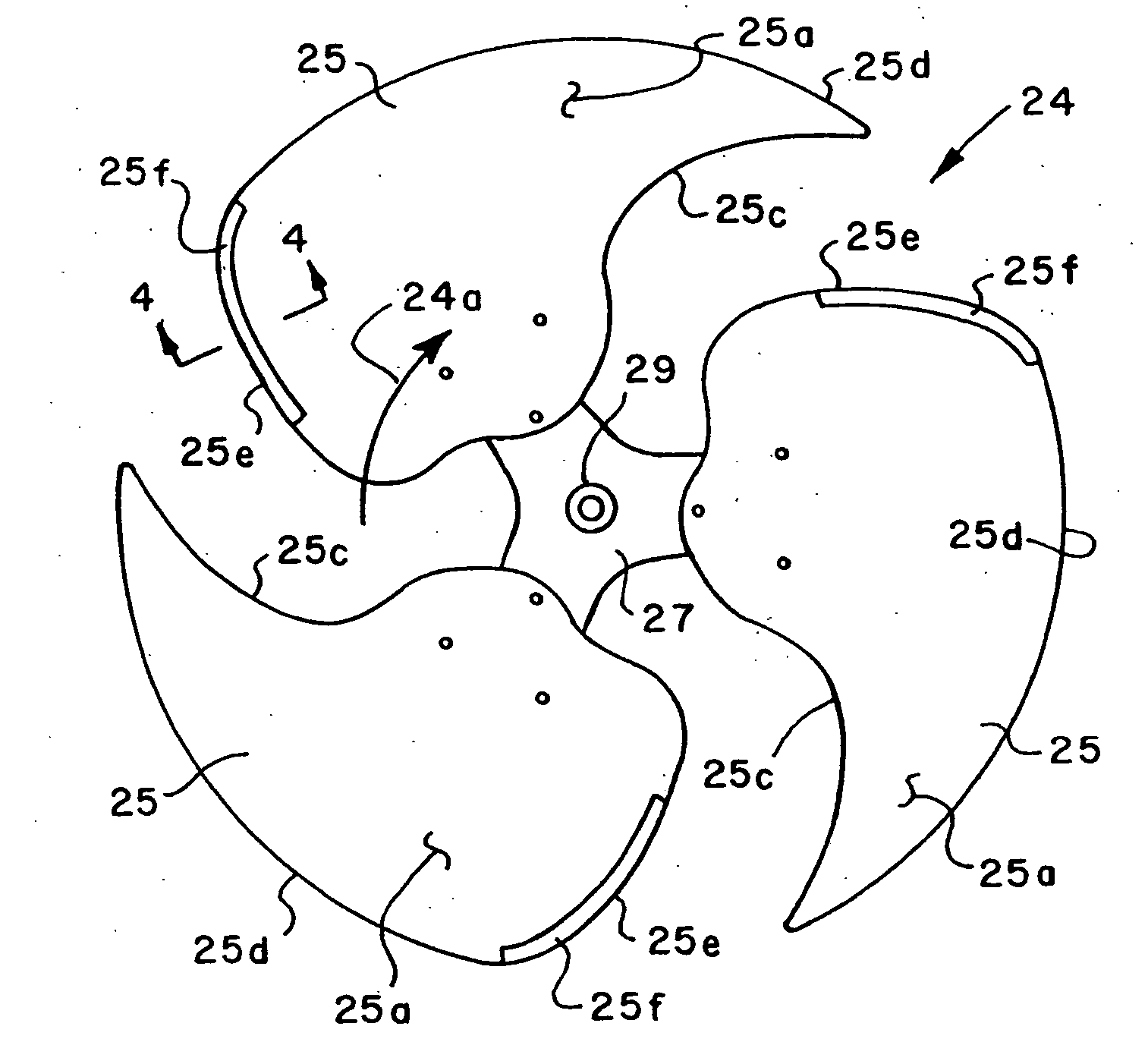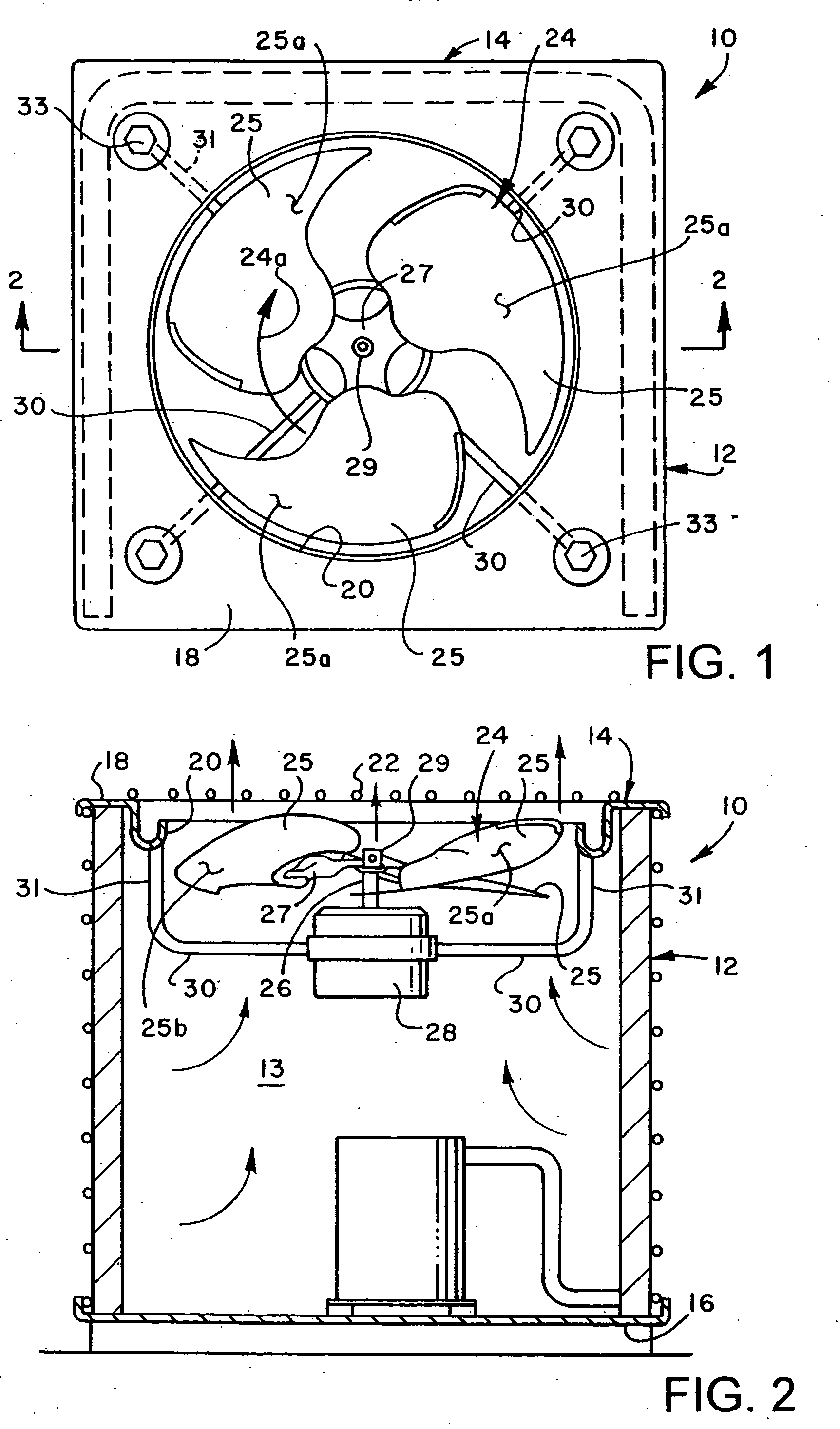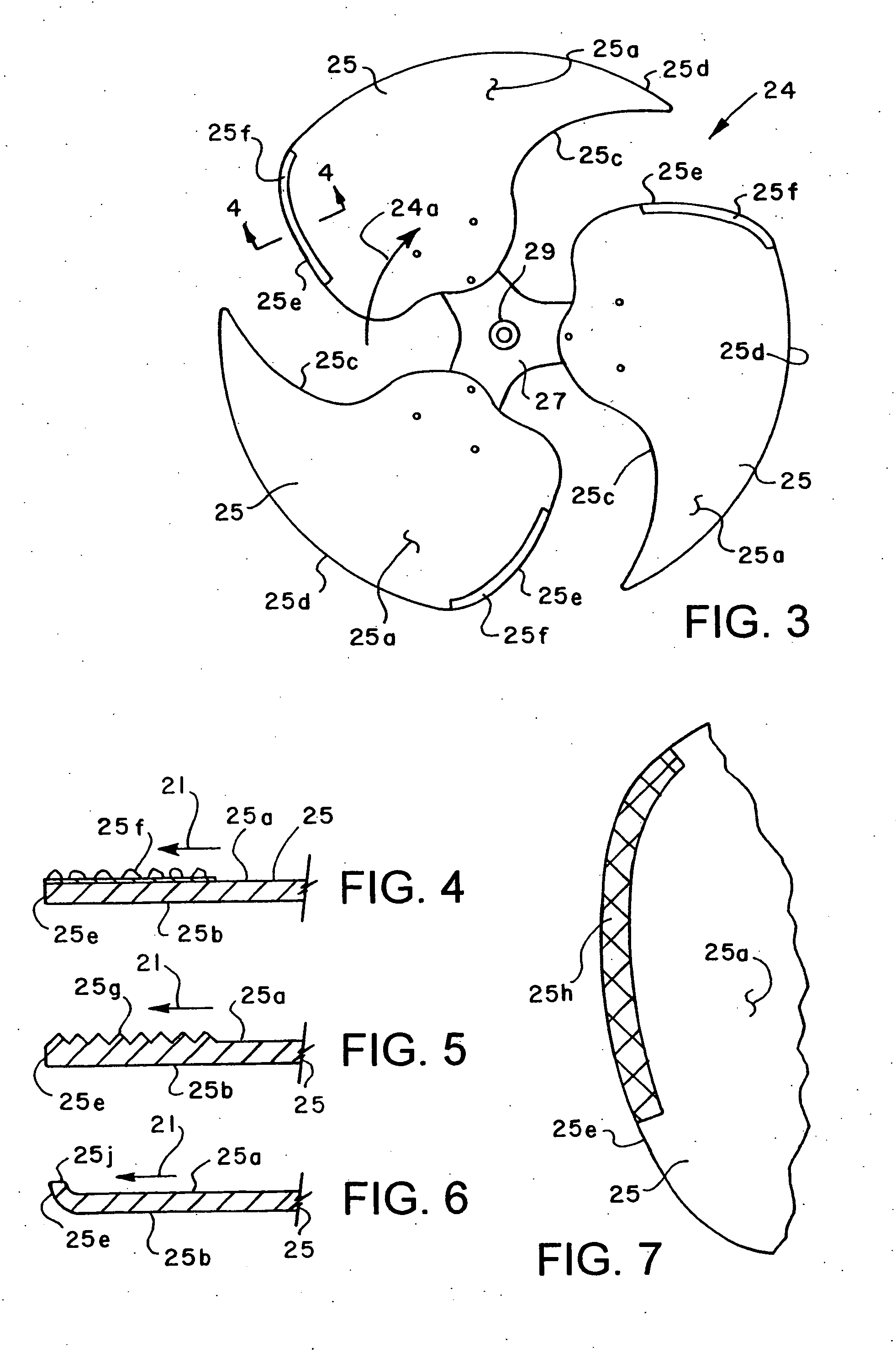Fan with reduced noise generation
a technology of axial flow fans and fans, which is applied in the field of fans with reduced noise generation, can solve the problems of generating noise at frequencies perceived by the human ear as somewhat annoying, and one source of noise in axial flow fans, and achieve the effect of reducing acoustic emissions or “noise”
- Summary
- Abstract
- Description
- Claims
- Application Information
AI Technical Summary
Benefits of technology
Problems solved by technology
Method used
Image
Examples
example 1
[0036] A twenty-four inch diameter air conditioning system condenser cooling fan operating at 847 rpm to 859 rpm and having a geometry of the fan propeller 24 was tested with and without the roughened surface 25f. The blades 25 were of aluminum and of about 0.040 inch to 0.050 inch thickness. By applying a 0.375 inch width strip of 120 grit sandpaper of about 4.0 inches length to the blade surface 25a of each blade 25 directly adjacent the blade trailing edge 25e, a reduction in sound pressure level was observed within the human audible acoustic frequency range from about 200 Hz to 10,000 Hz. In particular, a bulge in the acoustic vibration one-third octave spectrum of the fan between 2400 Hz and 3150 Hz and a characteristic hissing sound generated thereby, was eliminated by a roughened blade surface treatment as described above. Accordingly, it is indicated that using surface roughness to force transition of fan blade surface air flows from laminar-to-turbulent flow may be achieved...
example 2
[0037] A condenser cooling fan having generally the same geometry as the fan described above for Example 1 was tested over the same operating speed range. Each blade was provided with two rows of trips 25p and extending along the trailing edges 25e of the blades 25, respectively, and as shown in FIG. 11. The trips 25p had a height of about 0.039 inches from surface 25a with gaps between adjacent trips in a row of about 0.13 inches to preserve blade structural integrity. Starting with the radially outermost set of trips 25p, the two rows of trips of each set were arranged in the pattern shown in FIG. 11 extending over distances of about 1.3 inches, 2.3 inches and 2.3 inches, respectively.
[0038]FIG. 12 illustrates the “A” weighted sound power level in dBA versus frequency in Hz (Hertz) for a fan having blades 25 without any surface interruption as indicated by the solid line curve 37. A maximum sound power level of about 60 dBA is indicated to occur at about 2800 Hz. As shown by the ...
PUM
 Login to View More
Login to View More Abstract
Description
Claims
Application Information
 Login to View More
Login to View More - R&D
- Intellectual Property
- Life Sciences
- Materials
- Tech Scout
- Unparalleled Data Quality
- Higher Quality Content
- 60% Fewer Hallucinations
Browse by: Latest US Patents, China's latest patents, Technical Efficacy Thesaurus, Application Domain, Technology Topic, Popular Technical Reports.
© 2025 PatSnap. All rights reserved.Legal|Privacy policy|Modern Slavery Act Transparency Statement|Sitemap|About US| Contact US: help@patsnap.com



